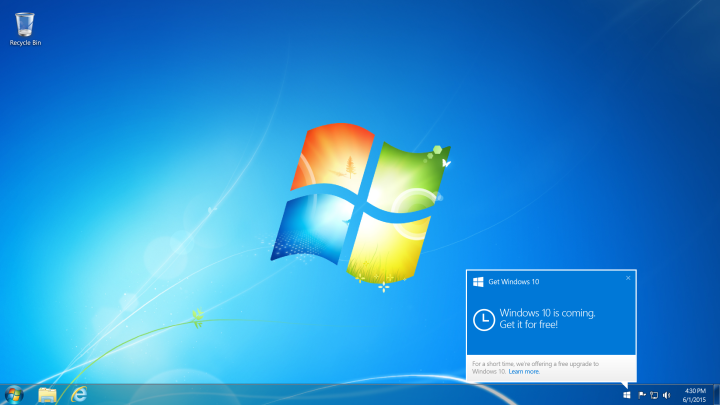
Update 7:50AM 6/22/2015: Microsoft updated the blog post slightly on Friday night, to remove the words “and remain activated,” from the post, leading some to report the free copy of Windows 10 will not be genuine. We think that’s not a correct reading of the post; instead this appears to be similar to an OEM license, which cannot be transferred between machines. Unfortunately, Microsoft has declined to comment further, so the exact nature of the free copy is uncertain. What’s certain, though, is that Windows 10 Insiders who install the new operating system before its release will receive a fully functional final version, even if the Preview was acquired through a clean install from a .ISO.
Original Text: We’ve reached a point where it doesn’t seem like Microsoft actually wants customers to pay full-price for Windows 10. If you’re using a PC with Windows 7, 8, 8.1, or RT, Windows 10 is free. If you’re sporting a device operating on a pirated, or non-genuine, version of Windows, Microsoft is planning a “very attractive” upgrade offer. Unfortunately, those stuck with other legacy versions of Windows, such as Vista or XP, would have to pay a minimum of $199 to make the jump to 10. The same pricing applies to owners of custom hardware with no operating system, or Linux, installed.
That all changes today thanks to a loophole acknowledged by Ars Technica, who pointed out that anyone running the Insider Preview of Windows 10, presently build 10130, will be entitled to a free upgrade to the release-day build of the operating system beginning July 29. And of course, subsequently, regular stable updates will be available to every Windows 10 user, including those opting to upgrade from Windows 10 Insider Preview.
Confusingly enough, the next update for Windows 10 Insider Preview will prompt users to log in with the same credentials used for the Windows 10 Insider Program registration. As of now, each install of Windows 10 Insider Preview is accompanied with an automatic registration to the program. When Windows 10 launches, however, this process will change.
Starting July 29, users interested in installing Windows 10 Insider Preview will be asked to manually apply for the Insider Program and log in using the corresponding Microsoft account. Auspiciously, even without the proper account credentials, anyone who installs Windows 10 Insider Preview on July 29 and beyond will in fact be eligible for a free upgrade to a consumer build of the newest software.
While anyone who upgrades to Windows 10 Insider Preview before July 29 is guaranteed an upgrade to the release build of Windows 10, it isn’t likely that the technical preview, builds 10130 and those preceding, will be around forever. As a result, it’s recommended that if you’re interested in taking advantage of this free upgrade offer, you’re best off to install Windows 10 Insider Preview as soon as you can to avoid its inevitable expiration.
Editors' Recommendations
- Scores of people are downgrading back to Windows 10
- Microsoft announces a new threat to push people to Windows 11
- Microsoft may fix the most frustrating thing about Windows updates
- The best Windows 10 keyboard shortcuts
- This new Windows 11 feature is a great addition for PC gamers


